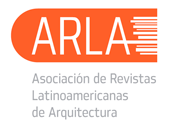GAIA SCIENZA. GEOGRAFÍA INTERACTIVA, MAPA PERFORMATIVO: GEO DESPUÉS DE GIS
Resumen
“La tierra es plana. La tierra no se mueve. La tierra no existe”
En las tres paradojas de Giulio Macchi aparecen los caracteres esenciales de la Geografía, las dinámicas que la atraviesan y, en consecuencia, sus herramientas específicas. La geografía como teoría es relativamente joven, a pesar de la existencia de una práctica anterior. Esta renueva constantemente el corpus de sus instrumentos y afecta tanto al cambio en su objeto - la tierra - y en sus interpretaciones. Experimenta doblemente los cambios del “mundo”. Incluiremos la investigación en un paréntesis (abierto) que genera la importante relación entre Geografía y Proyecto. La cartografía es una práctica, núcleo temático en la geografía y, como un proceso selectivo y herramienta, “crea” paisajes. De tal manera que es posible deformar, a través de ella, la relación entre lectura-interpretación como un proceso del proyecto. Las tres paradojas enucleadas amplían y ponen en el centro temas principales de esta ciencia, especialmente en relación con la arquitectura como una ciencia del espacio:
1. carácter performativo del mapa
2. geocentrismo científico y los códigos de la relación geografía-proyecto
3. transformacional como opuesto al carácter descriptivo del mapa
Mediante el análisis de tres paradojas se deduce cómo cada uno de ellos arrastra otras condiciones dialécticas, ahora amplificadas por la exuberancia de la “ciencia” en cuanto a la representación.
ABSTRACT
“The earth is flat. The earth does not move. The earth does not exist”4.
In the three paradoxes of Giulio Macchi appear the essential characters of Geography, the dynamics that go through it and, consequently, its specific tools.Geography as theory is relatively young, despite the existence of an earlier practice5. It constantly renews the corpus of its instruments, affected both the change in its subject - the land - and in its interpretations. Experiencing doubly the “World” changes. We’ll enclose the research in (open) parentheses that generate the key relationships between Geography and Project. Mapping is a thematic core practice in geography and, as a selective process and tool, “creates” landscapes. Such that it’s possible to deform, through it, the relationship between reading-interpretation as a process of the project. The three enucleated paradoxes amplify and put at the center main issues of this science, especially in relation to architecture as a science of space:
1. the map’s performative character
2. scientific geocentrism and codes of the link geography-project
3. transformational as opposed to descriptive character of the map
By analyzing three paradoxes we deduce as each of them drag other dialectical conditions, now amplified by the exuberance of “science” in regarding representation.
Referencias
A.A.V.V., An Atlas of Radical Cartography, Journal of Aesthetics & Protest Press, 2008.
ARASSE, D. “De la mémoire à la rhétorique”. In: Arasse, D. Histories de peintures. Ed. Denoël, 2004.
ARNHEIM, R. Art and Visual Perception. University of California Press, 2004.
BAUDRILLARD, J. Simulacra and Simulations. University of Michigan Press, 1995.
CORNER, J. “Eidetic Operations and New Landscapes”. In: Recovering Landscape. Princeton Architectural Press, 1999.
CORNER, J. “The Agency of Mapping: Speculation, Critique and Invention” In: Center. No. 14. School of Architecture of University of Texas. Austin, Texas, 2007.
CROTTI, S. “Un’architettura delle differenze”. In: Urbanistica. No. 82, febbraio 1986.
FARINELLI, F. I segni del Mondo. Ed. La Nuova Italia, 1992.
FRASCARI, M. “A New Angel/Angle in Architectural Research: The Ideas of Demonstration”. In: Journal of Architectural Education 44, No. 1, 1990.
GLISSEN, D. “ Architecture’s Geographic Turns”. In: Log 12, 2008.
GOODMAN, Nelson. Fact, Fiction, and Forecast (Fourth Edition). Harvard University Press, 1983.
HARVEY, J. B. and WOODWARD, David. The History of Cartography 2, Book 1. University of Chicago Press. s.f.
HARLEY, J. B. Deconstructing the Map. University of Winsconsin in Milwaukee, 1989.
LEWIS, R. “Axioms for reading the Landscape: some guides to the American Scene” In: Center. No. 14. School of Architecture. University of Texas. Austin, Texas. 2007.
LORIMER, H. “Cultural geography: the busyness of being more-than-representational”. In: Progress in Human Geography. No 29. 2005.
MACCHI, G. “Introduzione”. In: AAVV, Il disegno del mondo. Ed. Electa, 1983.
MIGLIORE, T. “Sul disordine de lettura, la carta geografica nell’arte contemporanea”. In: Altre figure. Intorno alle figure di argomentazione. Franco Angeli, Milano, 2011.
PICON, A. Représenter la ville territoire : entre écrans de contrôle et dérives digitales. 2010.
THRIFT, N. Non-representational theory: Space, Politics, Affect. Ed. Routledge, 2007.
INTERNATIONAL SIMPOSYUM. Life After Gis. Harvard University. Graduate School of Design. 2011.







